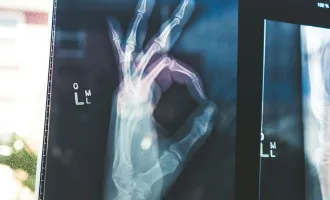Ban Sugary Drinks from UCSF Campus
The time has come for society to start regulating sugar. Ask any professor in any health field if there are negative effects from excess sugar consumption, and the answer will be a universal and resounding, “Of course!”
I’m not here to convince you that sugar is bad for us; the question now is: How do we change our culture of consumption to promote a healthier society?
The problem is huge and complicated. All modern cuisines use sugar to some degree, and most processed foods contain sugar. Political barriers exist too. The lobbies of cane and beet sugar growers and producers of corn syrup influence many senators, who resist any changes to current agricultural subsidies.
Reducing sugar at those system-wide levels is daunting — we should start instead with activism at the local level. It is time for UCSF to take the lead in modern food policy. It is time for UCSF to ban sugary drinks from its campuses.
Why start with drinks? We can’t, and wouldn’t want to, ban all sugar from campus. So, how do we allow reasonable sugar consumption while discouraging excessive sugar consumption? Also, we have to show respect for individual autonomy: If people want to consume unhealthy things, it is ultimately their choice.
However, what we can do is get rid of the most sugary items and make access to unhealthy choices less convenient.
Sugary drinks are among the most offensive, and it’s easy to measure how much sugar they contain. Drinks represent a category with clear boundaries, whereas sugary foods are a gray area. Ban candy, then you should also ban chocolate chip cookies, ban cookies, then you should also ban biscotti, ban biscotti, then you should also ban zucchini bread, etc.
Coca-Cola has 3.25 grams of sugar per ounce. That’s 39 grams for a 12-ounce can. That’s 10 packets of sugar per can. Most people would not blithely consume 10 packets of sugar at a sitting.
The insidious thing about beverages is that, being liquid, they slip down our throats so quickly, we aren’t as aware of their toxic sweetness, especially when they’re carbonated.
Apple juice is no better, with an equal amount of sugar per ounce, 3.25 grams. Snapple is close behind, with 2.875 grams of sugar per ounce. Even Vitamin “Water” contains 1.625 grams per ounce! So, while soft drinks are the most problematic, these other sugary beverages are also implicated (see http://www.sugarstacks.com/beverages.htm).
Ultimately, an arbitrary line must be drawn, for example, by banning all drinks with more than 1.5 grams of sugar per ounce. People who crave sweeter drinks, of course, will always be able to bring their own sugar with them and add as much as they like.
Nevertheless, being the first medical center to take this step would have enormous impact. Modelling healthy habits should be part of every health care program, and UCSF could be a beacon to inspire other institutions in similar sugar-reduction plans.
We already have on our campus some leaders in the anti-sugar movement. In the February 2 issue of Nature, Robert Lustig, MD, Laura Schmidt, PhD, MSW, MPH and Claire Brindis, DPH, published an article about sugar in the modern diet and its direct connection to the worldwide health crisis of obesity and related diseases.
I call on these visionaries to lead the charge for the campus-wide sugary-drinks ban.
To close, I will quote a news article (“Societal Control of Sugar Essential to Ease Public Health Burden,” Feb. 1, 2012) published on the UCSF website:
“Sugar should be controlled like alcohol and tobacco to protect public health, according to a team of UCSF researchers, who maintain in a new report that sugar is fueling a global obesity pandemic, contributing to 35 million deaths annually worldwide from non-communicable diseases like diabetes, heart disease and cancer.
“Sugar, they argue, is far from just ‘empty calories’ that make people fat. At the levels consumed by most Americans, sugar changes metabolism, raises blood pressure, critically alters the signaling of hormones and causes significant damage to the liver — the least understood of sugar’s damages. …
“Many of the interventions that have reduced alcohol and tobacco consumption can be models for addressing the sugar problem, such as levying special sales taxes, controlling access and tightening licensing requirements on vending machines and snack bars that sell high sugar products in schools and workplaces.”


